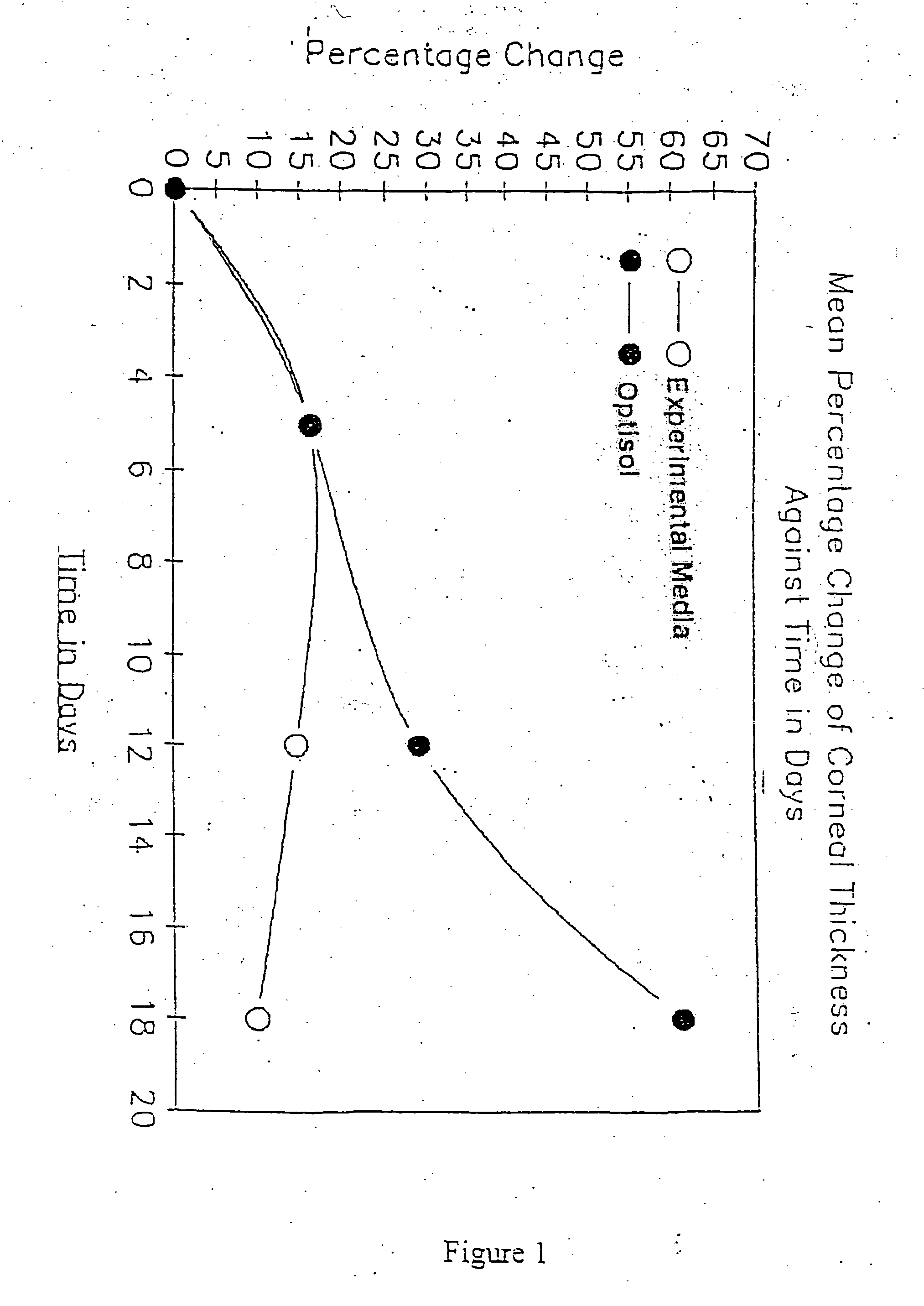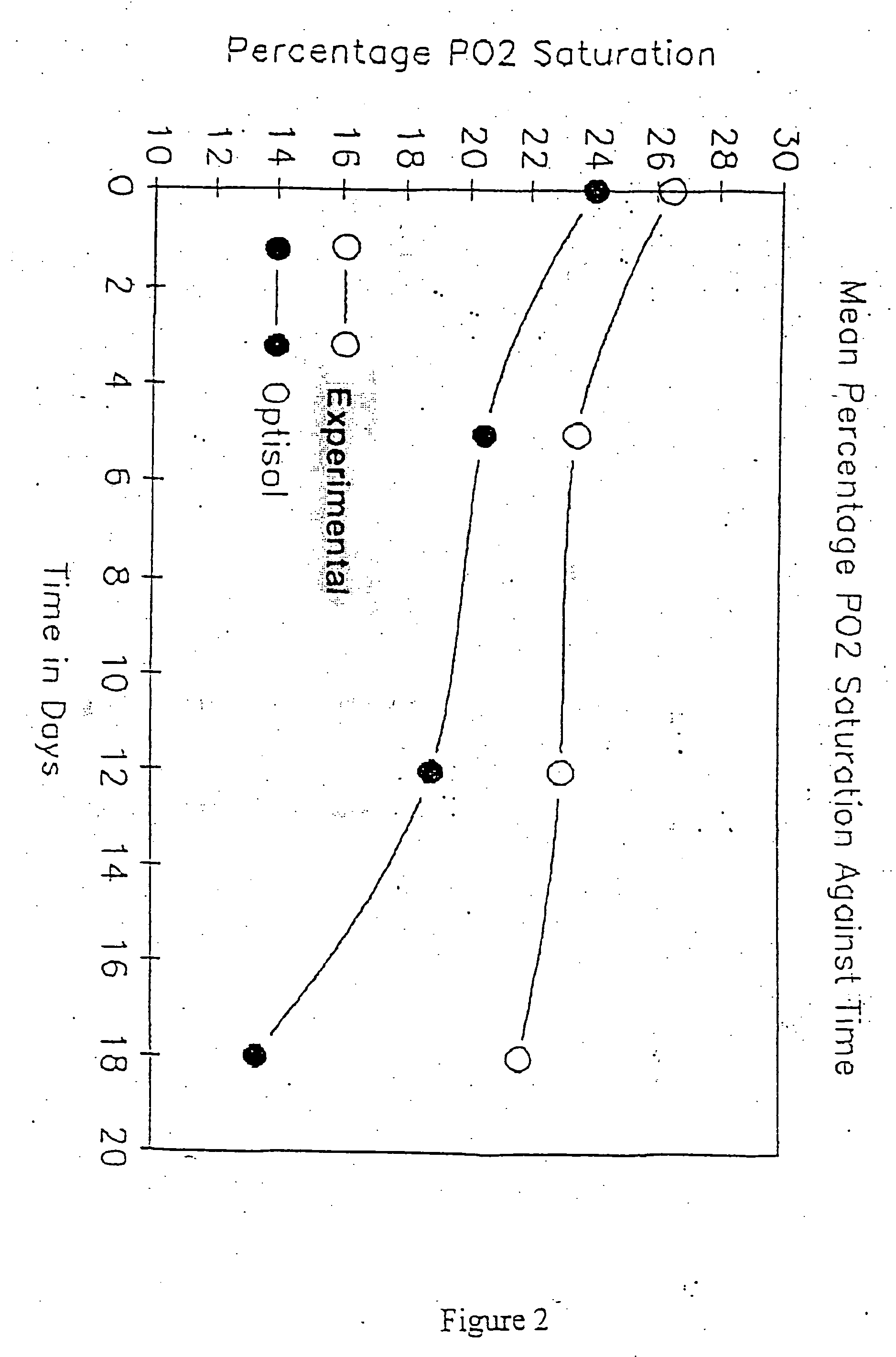Extending tissue preservation
a tissue preservation and tissue technology, applied in the field of tissue preservation for transplantation, can solve the problem that the demand for corneal transplantation exceeds the available supply of corneal cells
- Summary
- Abstract
- Description
- Claims
- Application Information
AI Technical Summary
Benefits of technology
Problems solved by technology
Method used
Image
Examples
example 1
[0055] Seven white New Zealand rabbits weighing two-three kg were killed with sodium pentobarbital overdose. Their eyes were flooded with neosporin. Corneas were excised from both eyes within ten minutes of termination. The right cornea were placed in a mixture of oxygenated perfluorocarbon emulsion and Optisol. The left eyes were placed in pure Optisol. In both cases the corneas were immersed in the Optisol layer. All corneas were stored at 4.degree. C. for 20 days. The corneal thickness was measured using the Dickstein-Maurice technique with a pre-calibrated specular microscope. Central cornea measurements were on days 0, 6, 12 and 18 (average of three measurements). The oxygen tension was measured using a Yellow Spring oxygen electrode. Care was taken to ensure the reading was done at the level of the cornea. Results are the average of readings taken at the 4, 8 and 12 o'clock position on days 0, 6, 12 and 18. On day 21, lactic acid was measured as follows. The corneas were weigh...
PUM
| Property | Measurement | Unit |
|---|---|---|
| temperature | aaaaa | aaaaa |
| temperature | aaaaa | aaaaa |
| particle size | aaaaa | aaaaa |
Abstract
Description
Claims
Application Information
 Login to View More
Login to View More - R&D
- Intellectual Property
- Life Sciences
- Materials
- Tech Scout
- Unparalleled Data Quality
- Higher Quality Content
- 60% Fewer Hallucinations
Browse by: Latest US Patents, China's latest patents, Technical Efficacy Thesaurus, Application Domain, Technology Topic, Popular Technical Reports.
© 2025 PatSnap. All rights reserved.Legal|Privacy policy|Modern Slavery Act Transparency Statement|Sitemap|About US| Contact US: help@patsnap.com



